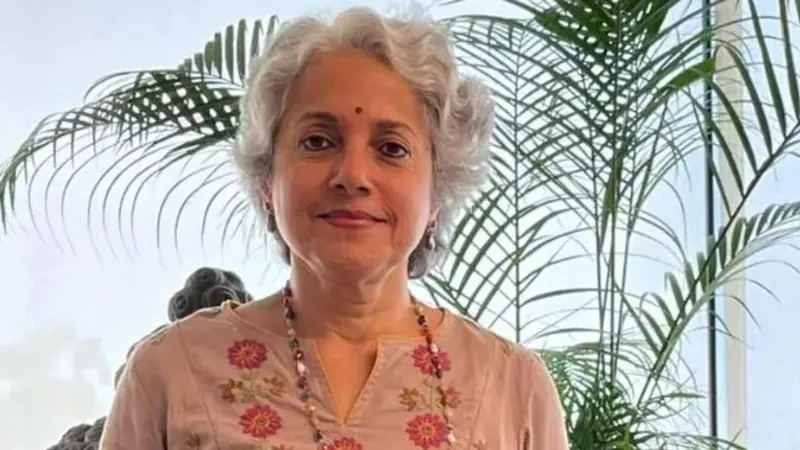
Shocking Warning from Soumya Swaminathan: Abdominal Obesity is on the Rise in India!
2024-10-28
Author: Jia
Alarming Factors Contributing to Abdominal Obesity
In a startling revelation, Soumya Swaminathan, the former chief scientist of the World Health Organization (WHO) and the current principal advisor for India's Health Ministry's tuberculosis program, has pointed out the alarming factors contributing to the rise of abdominal obesity in India—namely unhealthy diets and a lack of physical activity. This issue is not just a local concern but part of a wider global health crisis that needs immediate attention.
Health Implications
Swaminathan emphasized that obesity serves as a precursor to various non-communicable diseases, including diabetes, hypertension, and even cancer. "Abdominal obesity—an alarming trend driven primarily by poor diet and inactivity—is a growing health threat," she stated in a recent post on social media platform X.
Call for Urgent Action
Citing a pivotal study published in The Lancet Regional Health, Swaminathan called for urgent action to increase public awareness, improve nutrition literacy, and provide better access to healthy food options and exercise facilities across the nation. Conducted by researchers from IIHMR University in Jaipur and Johns Hopkins University’s Bloomberg School of Public Health, the study draws on data from the National Family Health Survey (NFHS-5) conducted between 2019 and 2021.
Shocking Statistics
The findings from this crucial research reveal shocking statistics: abdominal obesity affects approximately 40% of women compared to only 12% of men, demonstrating a striking gender gap. Alarmingly, about 50-60% of women aged between 30 and 49 are classified as abdominally obese. This form of obesity is notably more prevalent among urban populations and is increasingly affecting lower and middle socioeconomic groups.
Waist Circumference Analysis
A critical highlight of the study is the revelation that many women with a healthy Body Mass Index (BMI) may still suffer from abdominal obesity, indicating that BMI alone is not a definitive measure of health. The waist circumference analysis included 659,156 women and 85,976 men aged 15 to 49 years, marking a significant step in understanding obesity metrics in India.
Regional Disparities
Geographically, states like Kerala, Tamil Nadu, Punjab, and Delhi report disturbingly high rates of abdominal obesity, with figures ranging from 57.9% to 65.4%. In contrast, states like Jharkhand and Madhya Pradesh show relatively lower prevalence rates, around 23.9%.
A Dual Burden of Malnutrition
The study doesn’t just highlight a rising health crisis for Indian women but also uncovers a dual burden of malnutrition affecting various population segments. This is a wake-up call for government authorities and health organizations as the data aligns with rising global healthcare concerns.
Government Intervention Needed
Swaminathan urges the government to implement targeted interventions aimed at populations at higher risk—especially women in their 30s and 40s—before this crisis escalates further. In a world where sedentary lifestyles and processed foods dominate, the message is clear: it's time to advocate for healthier living options and physical activity—or risk facing a national epidemic of health problems that could devastate families and communities alike.
Continued Advocacy
Stay tuned as we continue to track developments in this pressing issue and advocate for a healthier future for all!


 Brasil (PT)
Brasil (PT)
 Canada (EN)
Canada (EN)
 Chile (ES)
Chile (ES)
 España (ES)
España (ES)
 France (FR)
France (FR)
 Hong Kong (EN)
Hong Kong (EN)
 Italia (IT)
Italia (IT)
 日本 (JA)
日本 (JA)
 Magyarország (HU)
Magyarország (HU)
 Norge (NO)
Norge (NO)
 Polska (PL)
Polska (PL)
 Schweiz (DE)
Schweiz (DE)
 Singapore (EN)
Singapore (EN)
 Sverige (SV)
Sverige (SV)
 Suomi (FI)
Suomi (FI)
 Türkiye (TR)
Türkiye (TR)